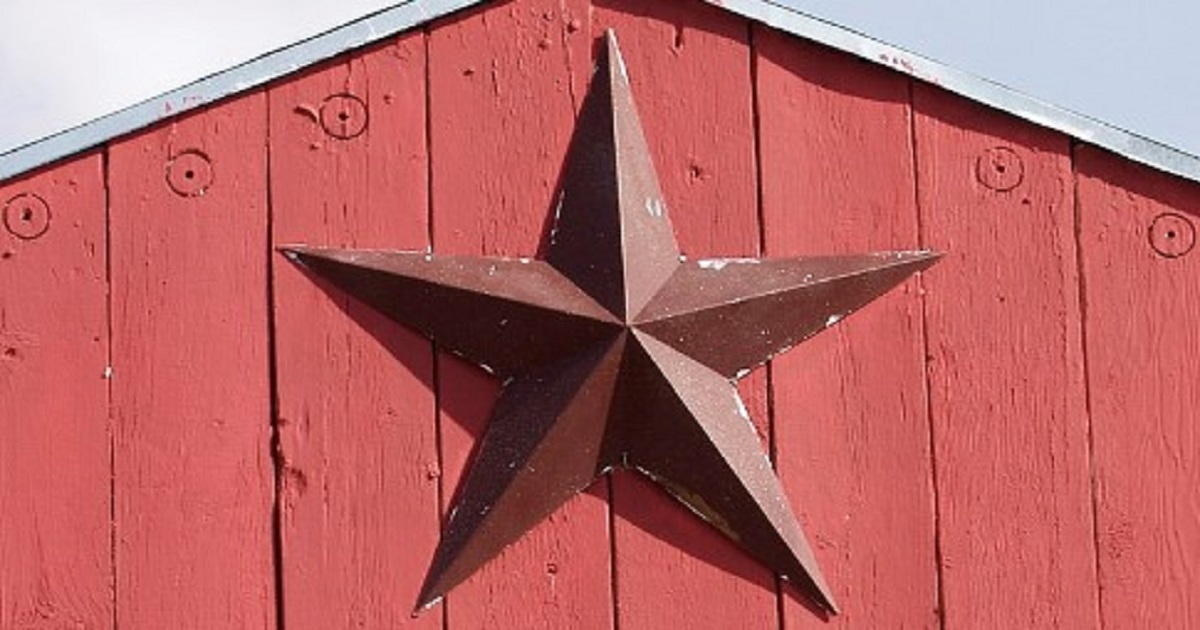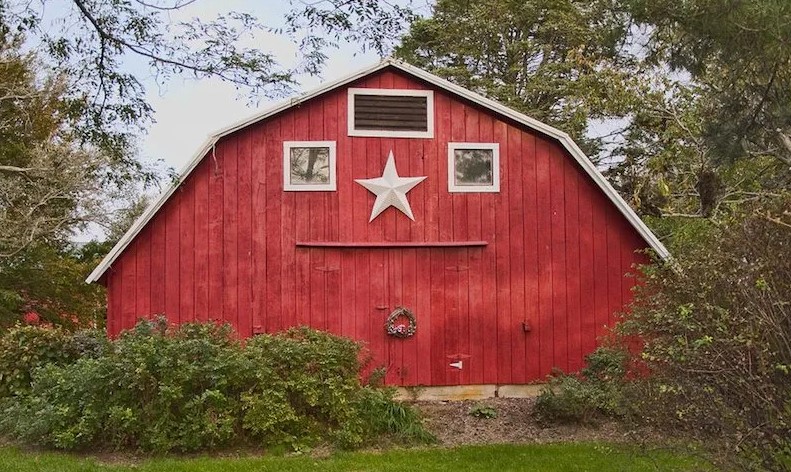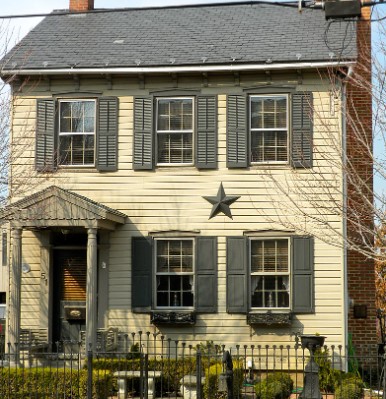The Meaning Behind “Barn Stars”

source: Una Smith
Have you ever noticed a decorative star on the front of a barn or a house? These stars, often called “barn stars,” come in various colors and sizes and are a popular sight in rural areas. But have you ever wondered what they mean or why they’re there? Let’s take a closer look at the story behind these charming decorations.
Barn stars have a rich history that goes back many years. They’re also known by other names, like “Amish stars,” “barn quilts,” or “hex signs.” Despite the different names, the meanings behind them are quite similar. Originally, barn stars were used for practical purposes. They were crafted by farmers and hung on their barns to represent different things.
One common explanation is that barn stars were often used as a symbol of good luck. Farmers believed that having a barn star would bring good fortune to their crops and livestock. They saw these stars as a way to ward off bad spirits and protect their harvests from harm. A red barn star, for instance, was said to symbolize energy, passion, and luck – a vibrant beacon of positivity amidst the rural landscape.

Barn stars also held a deeper meaning for some communities. In the late 1700s and early 1800s, the Pennsylvania Dutch community, which had strong ties to Germany, used barn stars as a way to express their cultural identity. These stars often had intricate geometric designs and vibrant colors. Each design and color combination had a specific meaning:
Red: As mentioned earlier, red barn stars represented luck and energy.
Blue: Blue barn stars were thought to bring peace and harmony. They symbolized a sense of calm amidst the challenges of farm life.
Green: Green barn stars stood for growth and fertility, which was vital for healthy crops and thriving livestock.
Black: Black barn stars were associated with protection. They were believed to guard against negative forces and bring a sense of safety to the farm.
White: White barn stars were a symbol of purity and spirituality. They represented the connection between the earthly and the divine, a reminder of the importance of faith in rural life.
In addition to these meanings, barn stars were used to convey messages of love, happiness, and unity within the community. They were like colorful patches of history adorning the landscape, telling stories of the people who tended to the land and found solace in the simple beauty of a painted star.
As time went on, barn stars began to take on new meanings. They became a form of folk art, with different regions and families adding their own unique twists to the designs. In some cases, barn stars were also used to indicate the skill of the craftsman who created them. A particularly well-crafted and eye-catching barn star could showcase the talent and dedication of the person who made it.

Today, barn stars have evolved into a symbol of heritage and tradition. Even though their original meanings might have faded for some, the appreciation for their historical significance remains strong. People now use barn stars to decorate their homes and gardens, embracing the nostalgic feel they bring. You might find barn stars in various places, from rural farms to suburban houses, serving as a reminder of the past and a connection to a simpler time.
In recent years, barn stars have even found their way into modern interior design and rustic-themed aesthetics. The unique shapes and colors add a touch of vintage charm to contemporary spaces, bridging the gap between old and new. It’s fascinating to see how something with such humble origins can become a beloved and versatile decoration in today’s world. These stars remind us of the connection between the past and the present, and the way something as simple as a piece of painted wood can carry stories and traditions across generations.